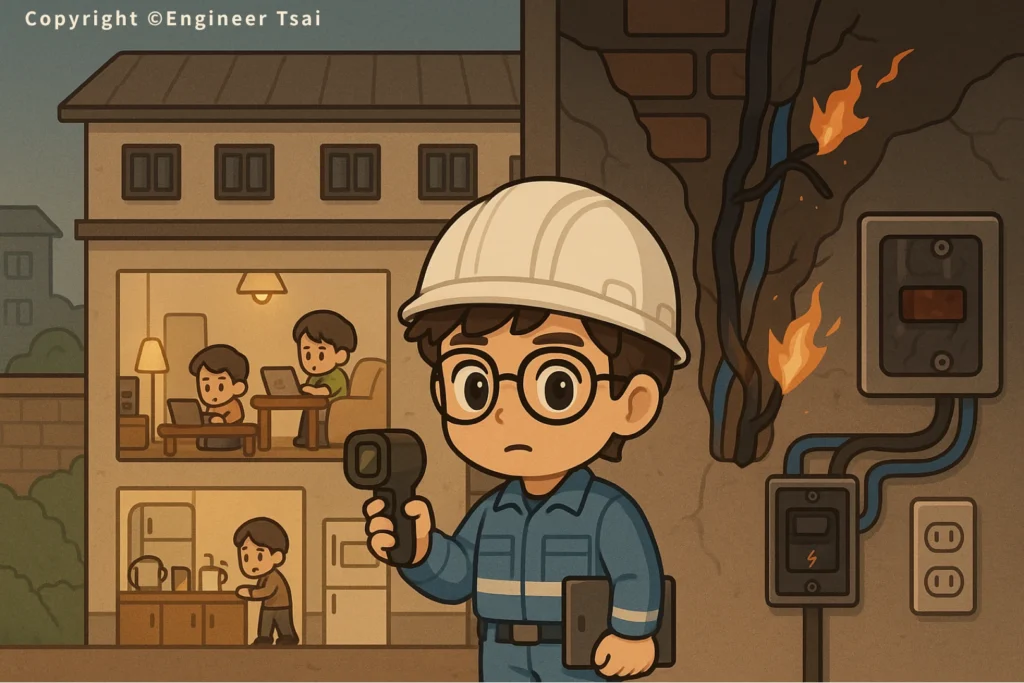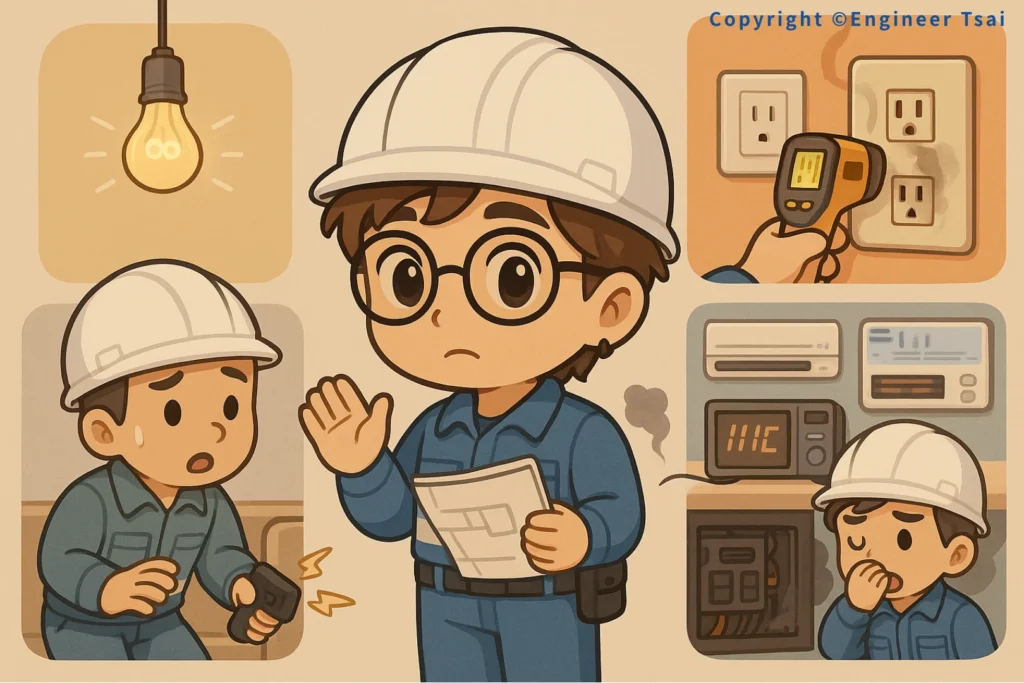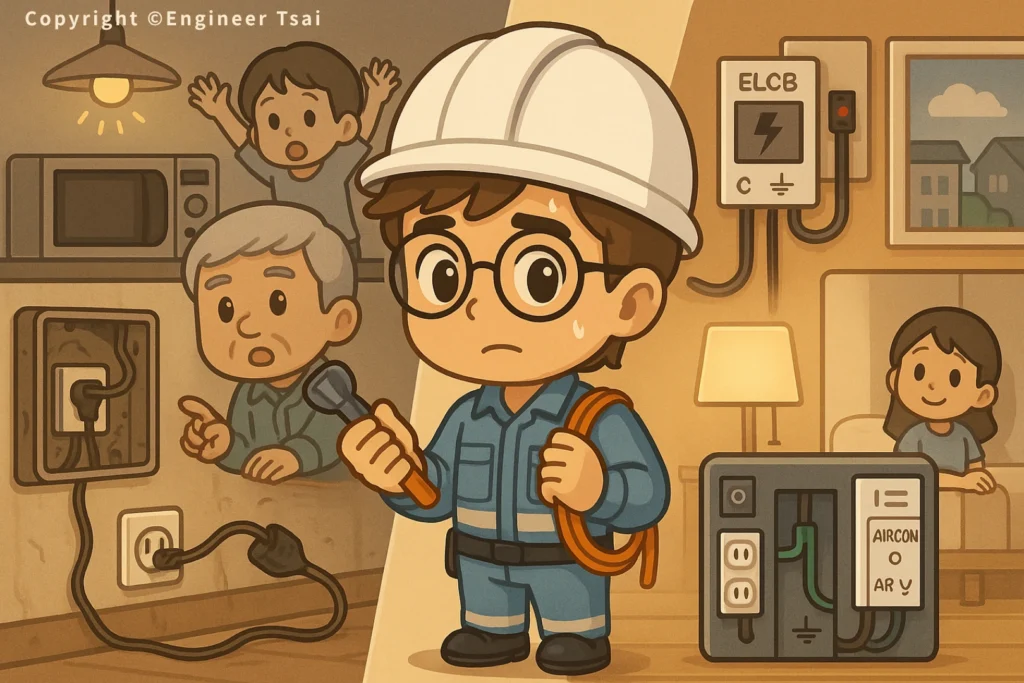Ever thought about how long the wiring in your home has been there?
People upgrade their sofas, swap out old AC units, but those wires in the walls? Sometimes they’ve been untouched for 20, 30, or even 50 years.
Here’s the hard truth: Old wiring is one of the top causes of house fires, power outages, and short circuits across America’s aging homes.
Quick Tip:
“Wiring is like plumbing—the older it gets, the more likely it is to leak, clog, or just plain fail.”

1. The Hidden Risks of Outdated Wiring in Older U.S. Homes
Is your place 30 years old or more?
If so, you might still have:
- Two or three wires (usually black, white, and sometimes red) powering the whole house
- Too few outlets, with many missing grounding
- Wires that are way too thin for today’s high-power appliances (think ACs, microwaves, electric water heaters)
Real-life story:
“We had the fridge, microwave, and toaster oven running, and suddenly the whole house lost power. The electrician opened up the panel—wires were black and brittle, insulation cracking. Turns out, the wiring was so old it was about to short out.”
2. How Do Wires Wear Out? Common Problems Explained
1. Brittle or Cracked Insulation
Years of heat and humidity dry out the plastic coating, making it crack or even peel off—leaving bare wire exposed.
2. Loose or Oxidized Connections
Old-school wiring often used twisted connections. Over time, these can loosen or oxidize, leading to arcing (mini “sparks”) and heat.
3. Undersized Wires, Overloaded Circuits
Older homes were built for fewer, lower-powered gadgets. Add modern appliances and you’ve got wires overheating from too much load.
4. No Ground Wire
A lot of older houses have outlets with no ground. That’s a big safety issue—no grounding means higher risk of shocks and appliance damage.
5. Short Circuits and Fire Hazards
When insulation fails and wires touch, or a loose connection arcs, you get a short circuit—one of the fastest ways to start a fire.

3. Warning Signs Your Wiring Needs Attention
- Lights that flicker or dim for no reason
- Outlets that feel hot or look discolored
- Appliances that trip breakers or cut out mid-use
- A tingly or buzzing feeling from appliance casings
- Smell of burning or melted plastic near your panel
Remember:
“If your house wiring starts acting up, don’t ignore it—it’s the wires telling you something’s wrong.”
4. How to Check and Prevent Wiring Problems
- Have a licensed electrician inspect your panel and main circuits
Especially if your home is 30+ years old or you’ve added big appliances. - Watch for warning signs
Any burnt smells, hot spots, discoloration, or frequent breaker trips need attention ASAP. - Before adding new appliances, check circuit capacity
Just because there’s an open outlet doesn’t mean your wiring can handle a new AC or oven. - Consider rewiring or upgrading your panel
Yes, it’s an investment, but it’s the safest way to future-proof your home—especially for families with kids or seniors. - Add GFCIs and proper grounding
Even partial upgrades (like in kitchens and bathrooms) can boost safety in an old house.
5. FAQ: Old House Wiring Myths & Fixes
Q: “My wires look fine—why replace them?”
A: You can’t always see internal damage. By the time there’s a visible problem, you might be at real risk.
Q: “Is a sudden outage always a wiring problem?”
A: Not always—it could be an overloaded circuit or just a tripped breaker. But if it keeps happening, get it checked.
Q: “Do I only need to rewire kitchens and bathrooms?”
A: Those are the highest risk, but ideally, the whole house should be checked—especially major appliances’ circuits.
Q: “Is rewiring my whole house a huge hassle?”
A: It’s easier than you think—pros can often do targeted rewiring without tearing up the whole house.

inal Thoughts: Safe Wiring, Safer Home
When it comes to home upgrades, wiring is the “invisible project” you should never ignore.
It’s not just about powering your devices—it’s about keeping your family safe.
If your house hasn’t had a wiring check in 20 years, schedule one next time you deep clean or renovate. About Old House Wiring.
It’s not just about “avoiding hassle”, it’s about protecting what matters most.
📌 Further Reading
🔹 Short Circuit: What It Is and How to Prevent It
Prevent major issues by understanding the basics of short circuits.
🔹 Common Multimeter Mistakes and How to Avoid Them
Learn to spot problems before they become disasters.
Ever dealt with old wiring, short circuits, or surprise appliance failures?
Share your story in the comments—or send this to a friend living in an older home. Let’s keep everyone safe!


